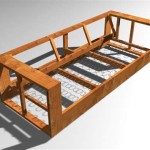```html
How To Clean Fabric Sofa With Vinegar
Maintaining the cleanliness of a fabric sofa is crucial for both aesthetic appeal and hygiene. Over time, sofas accumulate dust, stains, and odors, making regular cleaning essential. While various commercial cleaning products are available, vinegar presents a natural and cost-effective alternative. This article details the process of cleaning a fabric sofa with vinegar, offering a comprehensive guide to achieving a refreshed and sanitized piece of furniture.
Vinegar, specifically white distilled vinegar, is a mild acid that exhibits effective cleaning and deodorizing properties. Its acidity helps to break down dirt, grease, and stains, while its natural disinfectant qualities contribute to eliminating bacteria and odors. However, it's paramount to understand the proper methods and precautions when utilizing vinegar for cleaning delicate fabric sofas to avoid potential damage or discoloration.
Preparing for the Cleaning Process
Before commencing the cleaning procedure, it's imperative to gather the necessary supplies and prepare the sofa for treatment. This preliminary step ensures a smooth and efficient cleaning experience.
The following materials will be required:
- White distilled vinegar
- Water
- Spray bottle
- Clean microfiber cloths
- Soft-bristled brush (optional)
- Vacuum cleaner with upholstery attachment
- Baking soda (for odor neutralization)
The first step involves vacuuming the sofa thoroughly. Utilize the upholstery attachment to remove loose dirt, dust, crumbs, and pet hair from the surface, crevices, and under cushions. This initial vacuuming prevents the dirt from being further embedded into the fabric during the cleaning process.
Next, perform a spot test. This is a crucial step to ensure the fabric of the sofa is compatible with the vinegar solution. Select an inconspicuous area of the sofa, such as the back or underneath the cushions. Apply a small amount of the vinegar solution (described in the next section) to the area and allow it to sit for a few minutes. Observe for any adverse reactions, such as discoloration, fading, or fabric damage. If no negative effects are observed after the spot test, proceed with the cleaning process. If discoloration occurs, discontinue using vinegar and explore alternative cleaning methods compatible with the fabric type.
Ventilate the room by opening windows or turning on a fan. This helps to dissipate the vinegar odor and promotes faster drying of the sofa after cleaning.
Diluting and Applying the Vinegar Solution
The key to effectively cleaning a fabric sofa with vinegar lies in the proper dilution and application of the solution. An overly concentrated vinegar solution can potentially damage the fabric, while an insufficient dilution may not provide adequate cleaning power.
Prepare the vinegar solution by mixing equal parts of white distilled vinegar and water in a clean spray bottle. A 1:1 ratio is generally recommended for most fabric types. However, for heavily soiled areas or tough stains, a slightly stronger solution with a higher vinegar concentration may be considered, but always perform a spot test first.
Lightly mist the sofa with the vinegar solution. Avoid saturating the fabric, as excessive moisture can lead to mildew growth or damage to the underlying structure of the sofa. The goal is to dampen the fabric sufficiently to loosen dirt and stains without causing it to become overly wet. Work in small sections, spraying a limited area at a time.
After spraying, gently blot the area with a clean microfiber cloth. Use a blotting motion rather than rubbing, as rubbing can spread the stain or damage the fabric fibers. Apply gentle pressure to lift the dirt and stain from the fabric onto the cloth. Rotate the cloth frequently to use a clean area for each blot.
For stubborn stains, allow the vinegar solution to sit on the stain for a few minutes before blotting. This allows the vinegar to penetrate and break down the stain, making it easier to remove. A soft-bristled brush can be used to gently agitate the stained area, further loosening the dirt and debris. However, exercise caution and avoid excessive scrubbing, which can damage the fabric.
Repeat the spraying and blotting process as needed until the entire sofa has been cleaned. For heavily soiled areas, multiple applications may be necessary.
Drying and Deodorizing the Sofa
Once the cleaning process is complete, it is essential to ensure the sofa dries thoroughly to prevent the growth of mold and mildew. This step also involves neutralizing any remaining vinegar odor.
Allow the sofa to air dry completely. Open windows and use fans to improve air circulation and expedite the drying process. Avoid placing the sofa in direct sunlight, as this can cause fading or discoloration. The drying time will vary depending on the humidity levels and the amount of solution used, but it can typically take several hours or even overnight.
To neutralize any lingering vinegar odor, sprinkle baking soda liberally over the entire surface of the sofa. Baking soda is a natural odor absorber that will help to eliminate the vinegar smell. Allow the baking soda to sit on the sofa for several hours, or preferably overnight. The longer the baking soda remains, the more effective it will be at absorbing odors.
After the baking soda has sat for the required time, vacuum the sofa thoroughly using the upholstery attachment. This will remove the baking soda and any remaining dirt or residue. Ensure all traces of baking soda are removed, as any remaining powder can leave a residue on the fabric.
Once the sofa is completely dry and the baking soda has been vacuumed, fluff the cushions and arrange them back on the sofa. The sofa should now be clean, fresh, and free of stains and odors.
Regular maintenance, such as vacuuming the sofa weekly and spot cleaning spills promptly, will help to extend the lifespan of the fabric and prevent the build-up of dirt and stains. This will also reduce the frequency of needing to perform a more thorough cleaning with vinegar.
Different types of fabric may react differently to vinegar. Fabrics like silk or delicate linens may not be suitable for vinegar cleaning. Always check the manufacturer's instructions and care label before cleaning. If in doubt, consult professional upholstery cleaning services.
```
How To Clean Fabric Sofa With Vinegar Worthview

How To Clean A Fabric Couch And Sofa Pro Housekeepers

How To Clean Couch Stains On Common Materials Molly Maid

How To Clean A Sofa At Home With Soap Baking Soda And Vinegar Good As New Express Co

Simple Ways To Clean A Fabric Sofa With Vinegar 9 Steps

Simple Ways To Clean A Fabric Sofa With Vinegar 9 Steps

Diy Couch Cleaner 17oz Water 5oz 3 4oz White Vinegar 1 Baking Soda 1tbs Fabric Softener Spray Couc Clean Sofa

Simple Ways To Clean A Fabric Sofa With Vinegar 9 Steps

Tips How To Clean A Fabric Sofa 9 Easy Steps S

How To Clean A Sofa At Home With Soap Baking Soda And Vinegar Good As New Express Co








